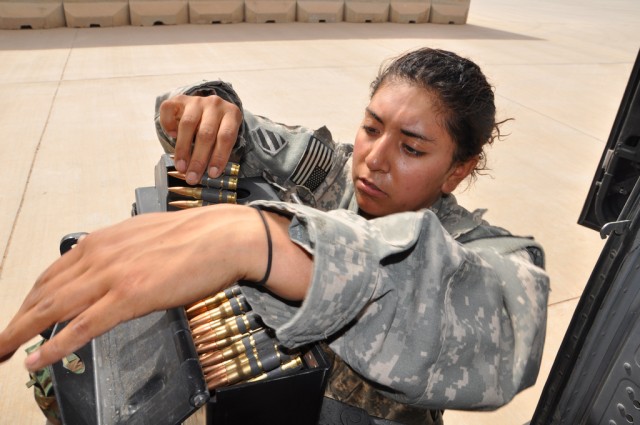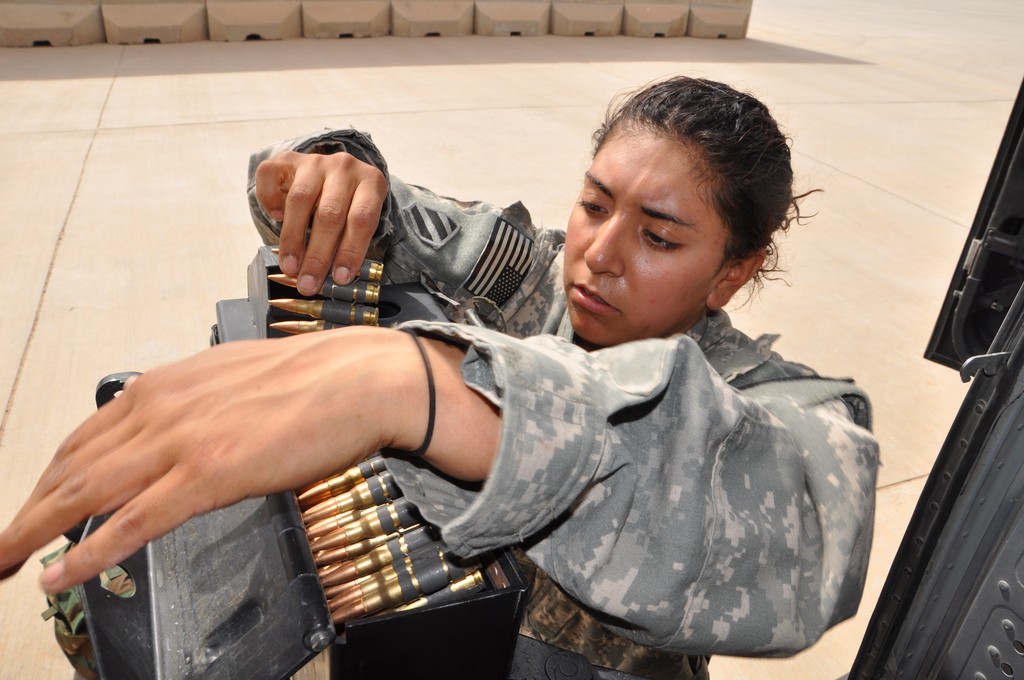
WASHINGTON (Army News Service, March 8, 2011) -- A report released to the president and Congress Monday recommends 20 changes in the way the military facilitates diversity, and suggests gender barriers be lifted on all career fields.
The Military Leadership Diversity Commission, established under the 2009 National Defense Authorization Act, is a group of 31 active-duty and retired officers, enlisted personnel and senior executives from major corporations. Research the commission conducted included finding a new universal definition of diversity and how to increase language, regional and diverse cultural knowledge in military leaders.
The commission is also recommending that the Department of Defense eliminate its combat-exclusion policies, which currently bar women from combat-arms specialties and from assignment in units battalion-size or smaller that have a routine mission to engage in direct combat.
According to the report, the commission would like the military to immediately allow women to be assigned to any unit that requires their military occupation, regardless of the type of unit. It would also like the DoD to take steps to open up career fields traditionally not available to women, including combat arms.
Several of the changes recommended will need a congressional vote, while others could be implemented at the level of the secretary of Defense.
Sgt. Amanda Solitario, an Army Reserve Soldier with the 304th Public Affairs Detachment at Joint Base Lewis-McCord, Wash., said she doesn't agree with the idea of women serving on the front lines.
"I don't really feel that women should be serving in combat-arms positions," she said. "I don't know how the average American feels about this, but I think that even if the woman is qualified for the position, I think it would be detrimental to put her in an all-male unit."
Solitario, who served in Iraq in 2007, explained that while there on one occasion she was the only female Soldier traveling with an all-male infantry unit. Solitario convoyed with the unit, and spent the night in an empty building with them en route to their destination.
She explained that even though the unit was stand-offish toward her at first, they warmed up to her after one day. However, sleeping in a room full of men with no privacy to change her clothes or use the bathroom was uncomfortable for Solitario.
Solitario's main concern of having women in combat-arms units, is that she thinks women would simply slow the men down. She said she thought that women would hold them back in training, and in a combat situation, men might be more worried about protecting the female Soldiers than their mission.
"There are separate standards, so how can you ask to put a female in an all-male unit'" Solitario said, pointing out the differences in scoring for the Army Physical Fitness Test as an example.
Solitario also said she was worried that more female Soldiers being killed in combat could have a detrimental effect on the country.
"If you put women in combat-arms positions, there are simply going to be a lot more female fatalities," she said.
Conversely, Staff Sgt. Genevieve Chase, a military intelligence Soldier and founder of American Women Veterans, has a very different point of view.
"We serve in normal society as equals now," Chase said, explaining that she thinks women should be allowed to join combat-arms units -- if they can keep up.
Chase said she doesn't think standards should be altered to cater to women, noting that she knows some female Soldiers who are just as physically fit as their male counterparts, so they should have an equal shot at any career path they choose.
"The infantry is not for every female Soldier, just like it's not for every male," Chase explained. "There are a lot of men in the Army, and not all of them want to be infantry."
As a military intelligence specialist, Chase, who speaks fluent Pashtu, said she's often been in circumstances where she is the only woman in a group of male Soldiers, and she's fine with that. She said her experiences with otherwise all-male units have been good ones, and she would like to see all jobs opened up to women -- if they can make the cut.
Chase also said she would like to see more acknowledgment for female servicemembers killed in combat, which is part of the reason she started American Women Veterans. She said that American society largely ignores the fact that more than 140 female servicemembers have been killed in Iraq and Afghanistan, and that women are already unofficially serving in combat-arms positions in jobs like military police.
Overall, she said she supports what the Military Leadership Diversity Commission is trying to accomplish, but said the hardest thing to change will be the culture of the military.
"The commission envisions expanding opportunities while maintaining the military's high standards," said retired Air Force Gen. Lester Lyles, chairman of the commission in an Military Leadership Diversity Commission press release. "This could be done by removing barriers that are unrelated to doing the job, such as barriers related to the individual's demographic membership, rather than their ability."
To view a copy of the Military Leadership Diversity Commission's final report, visit http://mldc.whs.mil.
Related Links:
Military Leadership Diversity Commission Report
Warrior target acquired: USAMU champion wins Army Soldier of the Year
Female MPs bring professionalism, added capabilities to fight
Panel says rescind policy on women in combat

Social Sharing